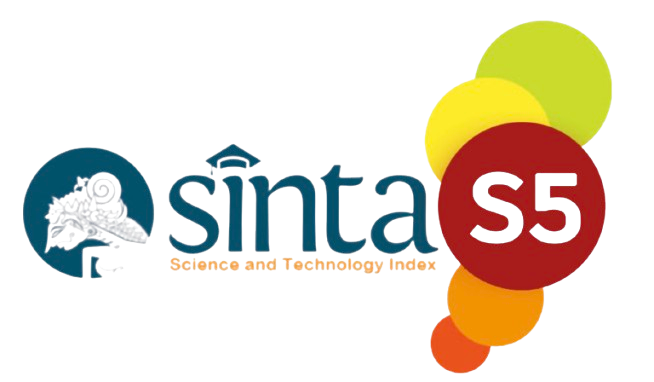Undergraduate Students’ Self-Esteem and Motivation in Relation to Their English-Speaking Proficiency
DOI:
https://doi.org/10.52217/ijlhe.v7i2.1562Keywords:
English, motivation, self-esteem, speaking, undergraduate studentsAbstract
This study aimed to investigate whether the combination of students’ self-esteem and students’ motivation significantly explains their English-speaking proficiency, both separately and simultaneously. For this purpose, 38 students were selected among the undergraduate students of the Islamic Study Faculty, University of Muhammadiyah Prof. Dr. Hamka, Indonesia. A quantitative analysis was applied. To measure the students’ self-esteem and motivation, modified questionnaires were used, while their English-speaking proficiency was evaluated by two raters. The result showed a significant influence of the combination of the two variables on the dependent variable; English speaking proficiency. It indicated from the calculation by using SPSS version 17.00 which showed that the value of F-observed 11.463 is more than F-critical (3.27). The multiple correlation jointly between X1 and X2 and Y (Ry12) by 0.629 is significant. Moreover, the R-squared value of 0.396 can be interpreted that self-esteem and motivation together account for 39.6% of the variation in students’ English-speaking proficiency.
References
Andewi, W., & Hastomo, T. (2022). Effect of Using Flipped Classroom for Teaching Writing Based on Students’ Motivation: A Quasi-Experimental Research. Premise: Journal of English Education and Applied Linguistics, 11(3), 615–631. https://doi.org/10.24127/PJ.V11I3.5511
Branden, N. (2001). The Psychology of Self-Esteem. Jossey-Bass, Inc.
Brown, H. D. (2001). Teaching by Principles: An Interactive Approach to Language Pedagogy. Addison-Wesley.
Celce-Murcia, M. (2001). Teaching English as a Second and Foreign Language. Heinle &Heinle.
Ebata, M. (2008). Motivation factors in language learning. The Internet TESL Journal, 14(4). http://iteslj.org/Articles/Ebata-Motivationfactors.html
Gardner, R. C. (2004). Attitude/Motivation Test Battery: International AMTB Research Project. http://www.publish.uwo.ca/~gardner/docs/englishamtb.pdf
Gardner, R. C. & Lambert, W. E. (1972). Attitudes and Motivation in Second Language Learning. Newbury House Publishers Inc.
Gardner, R.C (1985). Social Psychology and Second Language Learning: The Role of Attitudes and Motivation. Edward Arnold Ltd.
Harmer, J. (2007). The Practice of English Language Teaching. Pearson Education Limited.
Harris, D. P. (1969). Teaching English as a Second Language. Tata McGraw-Hill.
Hasbi, M. (2013). The attitudes of students from ESL and EFL countries to English. Register Journal, 6(1), 1-16. https://doi.org/10.18326/rgt.v6i1.1-16
Hasbi, M. (2017). Bringing pop-culture into classroom: Speaking 3’s Got Talent activity to enhance speaking skill of university students. Ta'dib, 19(2), 183-192.
Hasbi, M., & Nursaputri, E. (2024). Using ELSA Speak application as a medium to improve English speaking skills. IJLHE: International Journal of Language, Humanities, and Education, 7(1), 91–102. https://doi.org/10.52217/ijlhe.v7i1.1547
Hasbi, M., & Sari, P. A. (2021). Difficulties in teaching English distantly using Google Classroom. In Bogor English Student And Teacher (BEST) Conference, 2, 141-149. https://pkm.uika-bogor.ac.id/index.php/best/article/view/816
Hasbi, M., et al. (2024). How to Teach English to Gen Z Students. Rizquna.
Hasbi, M., et al. (2024). Useful AI Tools For English Teachers. Rizquna. http://e-repository.perpus.iainsalatiga.ac.id/21414
Hastomo, T., & Septiyana, L. (2022). The investigation of students’ engagement in online class during pandemic COVID-19. Jurnal Penelitian Ilmu Pendidikan, 15(2). https://doi.org/10.21831/JPIPFIP.V15I2.49512
Hastomo, T., Kholid, M. F. N., Muliyah, P., Septiyana, L., & Andewi, W. (2024). Exploring how video conferencing impacts students’ cognitive, emotional, and behavioral engagement. Journal of Educational Management and Instruction (JEMIN), 4(2), 213–225. https://doi.org/10.22515/jemin.v4i2.9335
Hastomo, T., Mandasari, B., & Widiati, U. (2024). Scrutinizing Indonesian pre-service teachers’ technological knowledge in utilizing AI-powered tools. Journal of Education and Learning (EduLearn), 18(4), 1572–1581. https://doi.org/10.11591/edulearn.v18i4.21644
Islamiah, N., & Nurhasanah, N. (2019). Speaking skill and picture series on EFL classroom. Journal of English Teaching, Applied Linguistics and Literatures (JETALL), 2(2), 77-83.
Islamiah, N., & Yudha, A. (2021). Students perception in using Youtube in learning English. Journal of English Teaching, Applied Linguistics and Literatures (JETALL), 4.
Istiara, F., Hastomo, T., & Indriyanta, W. A. (2023). A study of students’ engagement and students’ speaking skill: A correlational research. TEKNOSASTIK, 21(1), 1–7. https://doi.org/10.33365/TS.V21I1.2198
Koosha, M., Abdollahi, A., & Karimi, F. (2016). The relationship among EFL learners' self-esteem, autonomy, and reading comprehension. Theory and Practice in Language Studies, 6(1), 68.
Lawtie, F. (2006). Teaching Speaking Skills 2 – Overcoming Classroom Problems. The Internet TESL Journal, 7.
Mohammadi, M., et al. (2012). Simple and multiple relations between motivational strategies and academic achievement. International Research Journal of Applied and Basic Sciences, 3(2), 260-267.
Mruk, C. J. (1999). Self-Esteem Research, Theory and Practice. Springer.
Nunan, D. (1991). Language Teaching Methodology: A textbook for Teachers. Prentice Hall.
Nunan, D. (2009). Second Language Teaching and Learning. Cengage Learning Asia Pte Ltd.
Sari, A. S. (2024). Building Gen Z-friendly classroom engagement. In How to Teach English to Gen Z Students (pp. 91-98). Rizquna.
Sari, A. S., Fadilaturrahmah, F., Kalsum, U., Yuliana, Y., Juliansa, P. R., Putra, Y. S., & Tansilo, H. (2022). Pelatihan pembuatan video sebagai media pembelajaran menggunakan Kinemaster. Media Abdimas, 1(3), 41-45.
Sari, L. P., Hastomo, T., & Nurchurifiani, E. (2023). Assessing the Efficacy of Duolingo for Acquiring English Vocabulary Skills: Experimental Research. Journal of English Teaching Applied Linguistics and Literatures (JETALL), 6(2), 193–200.














